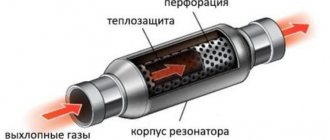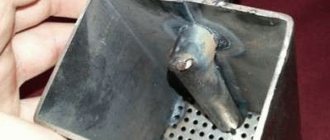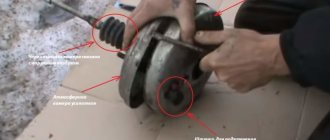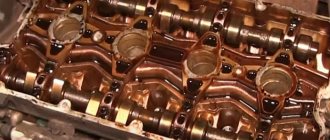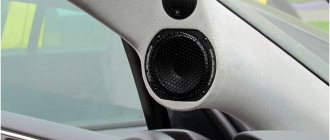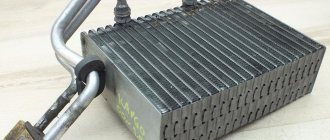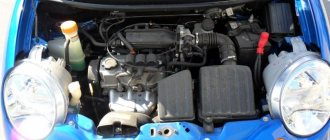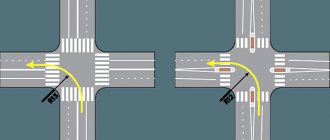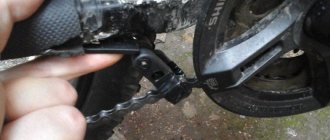Ground switch If you are going to send a VAZ or another brand car for a long period of time, you must follow certain rules. One of the items is installing a battery disconnect switch. It will keep the battery in working condition for a long time, preventing liquid leakage. In addition, the presence of this unit will serve as a serious obstacle for those who try to commit theft. Let's look at how to install a power switch on a VAZ car with your own hands. At the same time, we warn you: if you do not have sufficient skills, it is better to seek help from professionals.
Architecture of the VAZ 2106 generator
The VAZ 2106 generator of the G-221 brand produces alternating electric current and is designed to power on-board energy consumers and charge the vehicle battery.
By its design, the generator on a car is a three-phase synchronous electrical installation with electromagnetic excitation of right rotation. Since all consumers on the VAZ 2106 use direct current for their power supply, an electric rectifier, which is built into the VAZ generator, is used to convert the alternating current received by the electric generator into direct current. The electric rectifier circuit is based on the use of six silicon diodes. The maximum current received from the electric generator at a voltage of 14 V and 5000 rpm is 42 A. The generator on a VAZ is mounted on the engine on the right. The rotation of the electric rotor is carried out by transmitting rotational motion using a V-belt from the crankshaft pulley to a pulley mounted on the rotor of the VAZ generator.
Electric generator mounting diagram and its design
To secure the generator to the motor housing, there are special ears on its covers. Fixation is carried out using a bolt to the bracket and a pin to the tension bar. To prevent damage to the cover ears when securing the electric generator, special rubber buffer bushings are inserted into their holes.
When securing the unit, the tightening force leads to displacement of the clamping steel bushing, after which the special buffer bushing is compressed between the metal bushings, and the axial force applied during tightening is not transmitted to the fastening eye. The design of the unit consists of several parts. The main components included in the electricity generating device are:
- rotor;
- stator;
- covers made from aluminum alloy;
- fasteners;
- generator drive pulley.
1 – clamping sleeve; 2 – bushing; 3 – buffer sleeve; 4 – back cover; 5 – screw for fastening the rectifier unit; 6 – rectifier block; 7 – valve (diode); 8 – rear bearing; 9 – slip rings; 10 – rotor shaft; 11 – brushes; 12 – pin “30”; 13 – brush holder; 14 – pin “67”; 15 – neutral wire plug; 16 – generator mounting pin; 17 – fan impeller; 18 – pulley; 19 – plates; 20 – ring; 21 – front bearing; 22 – rotor winding; 23 – rotor; 24 – stator winding; 25 – stator; 26 – front cover.
Almost each of these design components consists of certain individual elements. The rotor consists of a shaft having a corrugated surface, onto which a steel bushing is mounted. In addition, beak-shaped steel poles are placed on the rotor shaft, which together with the shaft and bushing form the core of the electromagnet of the unit.
A pulley and a fan impeller are placed on the rotor shaft, the air flow from which cools the rectifier block circuit and other internal elements of the electric machine. Air is sucked into the cover windows, after which the flow passes inside the electric generator between its stator and rotor and is thrown out through the fan impeller.
The unit pulley and its impeller are made of thin sheet metal. Connected by welding.
Brushes and straightener for auto power generating device
The generator brushes are attached to a brush holder fixed on the cover of the unit. The brushes are made of a copper-graphite composition; they are pressed against the slip rings on the rotor using springs. Through the contact brushes, current is supplied to the excitation winding. The negative brush is attached to the ground of the generator by means of a metal plate, and the positive one is connected to the plug of the battery charge control lamp.
The elements that make up the electric rectifier are fixed on the back cover of the unit. An electric rectifier changes alternating electric current to direct current. The design of the electric rectifier is assembled on the basis of a three-phase bridge circuit. This electric generator component consists of six BA20 diodes.
These silicon diodes are semiconductor devices capable of passing electric current in one direction. The diode bridges are located in an aluminum housing. Three diodes from the rectifier block have a “plus” on their housing. These ends are pressed into the housing holder. Three more diodes of the rectifier block on the housing have a “minus” one. These diode bridge elements are connected to the ground terminal.
1 – “negative” brush; 2 – brush holder; 3 – “positive” brush; 4 – neutral wire plug block; 5 – insulating bushings of the contact bolt; 6 – rectifier block; 7 – contact bolt; 8 – stator; 9 – rotor; 10 – inner bearing mounting washer; 11 – drive side cover; 12 – fan assembly with pulley; 13 – outer bearing mounting washer; 14 – front rotor bearing; 15 – spacer ring; 16 – coupling bolt; 17 – clamping sleeve; 18 – cover from the side of the slip rings; 19 – buffer sleeve; 20 – bushing.
To ensure high-quality heat removal, the rectifier unit diodes are pressed into original holders made of aluminum. Repair of the rectifier unit is impossible; if any of its elements fail, the entire rectifier is replaced.
Connection diagram for generator in VAZ cars
The generator in cars is designed to generate electricity and charge the battery. If the normal operation of a car electric generator is disrupted, the battery begins to discharge and soon the car will stop starting completely - there is not enough battery charge. This device consists of a three-phase diode bridge, which, in turn, has 6 silicon diodes. Electrical voltage is created by the excitation of the rectifier at the moment when the rotor poles change under the stator windings. When the rotor rotates inside the machine stator, the poles of the rotor change. To increase the value of magnetic fluxes, the stator contains an electromagnetic exciting winding in the area of the magnetic cores. Marking and designation of wires:
- P - pink.
- F - purple.
- O - orange.
- B&W - black and white.
- KB - brown and white.
- CHG - black and blue.
- K - brown.
- H - black.
- B - white.
Typical malfunctions, repair and maintenance of the mass switch
The switch and the entire electrical circuit associated with it are reliable and can serve for many years without problems. However, if the switch is poorly positioned (for example, if it is poorly protected from moisture and dirt), corrosion may occur in it, which will lead to poor contact between the contact disk and the terminals, as well as between the terminals and the wires connected to them. In this case, the switch can be disassembled and cleaned.
Sometimes more serious malfunctions of the switch are possible - breakage of the electromagnet winding, breakage of the latch, sagging or breakage of springs, deformation of the armature rod, and others. In these cases, it is much easier and cheaper to completely replace the switch.
With proper installation and careful operation, the remote main switch will protect the battery from loss of charge and the car from theft for a long time, without requiring any attention.
As a rule, automobile factories do not install a special button or mechanism that would turn off the power to the mass. Ground (-) is called negative power supply. The negative from the battery is connected to the car body. Having the ability to disconnect the ground without disconnecting from the battery terminal, there is convenience and protection of the car from fire in the event of a short circuit and protection against theft.
Connection diagram for the VAZ-2101 generator
Structurally, generator 2101 consists of the following main elements:
- The rotor is a moving part that rotates from the engine crankshaft. Has an excitation winding.
- The stator is the stationary part of the generator and also has a winding.
- Front and rear covers , inside of which bearings are installed. They have eyelets for attaching to the internal combustion engine. The back cover contains a capacitor necessary to cut off the alternating current component.
- Semiconductor bridge - called a “horseshoe” for its similarity. Three pairs of semiconductor power diodes are mounted on a horseshoe-shaped base.
- A pulley on which the VAZ-2101 generator belt is placed. The belt is V-shaped (on modern cars a multi-ribbed belt is used).
- The voltage regulator is installed in the engine compartment, away from the generator. But still it must be considered part of the structure.
- The brushes are mounted inside the generator and transmit the supply voltage to the field winding (on the rotor).
Connection diagram for the VAZ-2107 generator
1 - battery; 2 - negative diode; 3 - additional diode; 4 - generator; 5 - positive diode; 6 - stator winding; 7 - voltage regulator; 8 — rotor winding; 9 — capacitor for suppressing radio interference; 10 — mounting block; 11 — battery charge indicator lamp in the instrument cluster; 12 - voltmeter; 13 — ignition relay; 14 - ignition switch.
Page not found
Page not found – Satellite Skip to content
- 420061, Republic of Tatarstan, Kazan, N. Ershov St., 27A
- Mon–Fri, 9:00–18:00
- 8-800-000-00
Request a call
- Request a call
Feedback
- Mon–Fri, 9:00–18:00
- 8-800-000-00
- Request a call
Feedback
- News
- About the company About us
- Certificates
Goods
- Tachographs
ADR GLONASS Services
- Installation of the main battery switch (GVAcB) “Satellite-16” Installation of the speed limiting device (SLD)
Installation of an anti-lock braking system (ABS) Installation of the ERA-GLONASS system Registration and receipt of SBCTS Obtaining a driver card Installation of tachographs Installation of satellite monitoring systems (GLONASS/GPS) Re-equipment of a vehicle according to the requirements of ADR Assistance in registering changes in the design of the vehicle with the traffic police Licensing for the transportation of passengers Certification of car service services Terms of delivery and payment Promotions Contacts
- Authorization
- Cart / 0.00₽ Cart is empty.
0Cart Your cart is empty.
404
Unfortunately nothing was found. Maybe try one of the links below, or search?
- Kazan, st. Ershova, 27A
- +7
- Mon–Fri, 9:00–18:00
LLC "Satelit"
- News
- About company
- Certificates
- Wholesalers and partners
- Contacts and details
- Feedback
Goods
- Tachographs
- ADR
- GLONASS
- All goods
Services
- ABS installation
- Installation of UOS
- Equipment for ADR
- Registration of changes in PTS
- Licenses to transport passengers
- All services
My account
- Entrance
- Registration
2020
- Privacy Policy
- Public offer
- News
- About the company About us
- Certificates
Goods
- Tachographs
ADR GLONASS Services
- Installation of the main battery switch (GVAcB) “Satellite-16” Installation of the speed limiting device (SLD)
Installation of an anti-lock braking system (ABS) Installation of the ERA-GLONASS system Registration and receipt of SBCTS Obtaining a driver card Installation of tachographs Installation of satellite monitoring systems (GLONASS/GPS) Re-equipment of a vehicle according to the requirements of ADR Assistance in registering changes in the design of the vehicle with the traffic police Licensing for the transportation of passengers Certification of car service services Terms of delivery and payment Promotions Contacts Authorization +7
Connection diagram for the VAZ-2108 generator
The VAZ-2108 generator has a rather massive stator winding, since it uses a large cross-section wire. It is with its help that electricity is generated. The wire is wound evenly over the entire inner surface of the stator into recesses specially provided for this purpose in the magnetic core. It’s worth talking about the latter separately. The middle part, the generator stator, consists of a series of thin metal plates pressed tightly together. They are often boiled on the outside to prevent separation.
Connection diagram for the VAZ-2109 generator
- Alternator. The 37.3701 or 94.3701 series can be installed.
- Negative diode.
- Additional diode.
- Positive diode.
- Alternator warning lamp, also known as battery discharge lamp.
- Instrument cluster.
- Voltmeter.
- Relay and fuse box located in the engine compartment in the compartment between the engine and the vehicle interior.
- Additional resistors built into the fuse mounting block.
- Ignition relay.
- Egnition lock.
- Accumulator battery.
- Capacitor.
- Rotor winding.
- The voltage relay is located in the engine compartment.
What else is important to know?
If you decide to install such a scheme, you should first consider several important points.
- If there are devices and instruments in the car that require adjustment, in the event of a power failure, they will need to be periodically restored. This usually concerns setting the time, date, etc.
- Opening the ground does not reset the odometer and does not reset the ECU settings, so there is no need to worry about this.
- If your alarm system has an autonomous siren, it may be triggered in the event of a ground fault.
- If the alarm does not have an autonomous power source, disconnecting the battery leads to automatic deactivation of the security system. It just won't work.
- On vehicles with an injection type engine, if the ground is disconnected, the power to the controller is also turned off. This leads to the deletion of all accumulated information.
- Periodically check the condition of the contacts and take resistance measurements. It is better to lubricate them with lithol, and also renew the lubricant.
- Some experts agree that it is better not to use the switch for cars manufactured after 2000. If it accidentally operates while the ignition is on, the immobilizer may become unstuck. The motorist will lose the ability to access his own car. To restore work, you need the help of specialists and an impressive amount of money.
- Disabling the mass leads to the loss of previously made settings in the multimedia system.
All this directly indicates that not everyone needs a mass switch and not always. And if you use it, then only when absolutely necessary.
Think carefully about the feasibility and necessity of using a car battery disconnect switch. Sometimes it makes sense to make a device yourself. But most are of the opinion that it is better to use factory solutions and involve experienced auto electricians. The choice is yours.
Connection diagram for the VAZ-2110 generator
On VAZ-2110, 2111 and 2112 cars, a 94.3701 generator was installed with a maximum output current of 80 Amperes and a voltage = 13.2–14.7 Volts.
Here is a breakdown of the connection diagram for the generator on the ten :
- Battery 12V;
- generator 94.3701;
- mounting block;
- egnition lock;
- battery charge indicator lamp in the instrument cluster
Installation
How to install an alarm with your own hands
Before you start installing the switch on the car, you need to choose it correctly
To do this, it is recommended to first pay attention to the type and model of the vehicle. You should also take into account parameters such as:
- mains voltage;
- current indicators.
For KAMAZ and other large vehicles, ground buttons with a voltage of 12V and a current of 50A are suitable. Installing the button is not difficult. To install it you will need:
- Connect the negative battery terminal wire to the button contact.
- Connect the free wire to the body of the bus or engine. For connections, it is recommended to use wires with a larger cross-section to ensure a reliable flow of high currents.
- Connect a small cross-section wire to one of the power contacts connected to the negative terminal.
- Lead the wire from the second contact of the coil to the button. Additionally, provision should be made for installing a 5A fuse on the circuit.
- Connect the second contact of the button to the positive terminal using any wire.
After this, you can begin operating the vehicle. To organize reliable operation of the device, it is recommended to use a non-latching button, which, after pressing, can open the circuit and return to its original position.
=>
In most trucks and various models of PAZ buses, a special means is used to protect the battery from unexpected discharge when it comes to long-term parking of the vehicle. The KAMAZ remote weight button serves as such a means. It is worth taking a closer look at its features, operating principle and design.
How to check the generator yourself
How to check a VAZ generator using the example of model 2109. Generator type 94.3701 alternating current, three-phase, with a built-in rectifier unit and an electronic voltage regulator, right-hand rotation.
Generator connection diagram . The voltage to excite the generator when the ignition is turned on is supplied to terminal “D+” of the regulator (terminal “D” of the generator) through indicator lamp 4 located in the instrument cluster. After starting the engine, the excitation winding is powered by three additional diodes installed on the generator rectifier block. The operation of the generator is controlled by a warning lamp in the instrument cluster. When the ignition is turned on, the lamp should be on, and after starting the engine, it should go out if the generator is working. If the lamp is brightly lit or glows half-lit, it indicates a malfunction.
The “minus” of the battery should always be connected to ground, and the “plus” should always be connected to the “B+” terminal of the generator. Failure to turn the battery back on will immediately cause increased current through the generator valves and damage them.
It is not allowed to operate the generator with the battery disconnected. This will cause short-term overvoltages to occur at the “B+” terminal of the generator, which can damage the generator voltage regulator and electronic devices in the vehicle’s on-board network.
It is prohibited to check the functionality of the generator “for spark” even by briefly connecting the “B+” terminal of the generator to ground. In this case, significant current flows through the valves and they are damaged.
Why do Soviet cars have Massa?
I am sure that many who still found the good old “Muscovites”, “Zhiguli” and “Zaporozhets” from their grandfathers (or maybe even owned them themselves) probably remember the atmosphere of these cars well. Their indescribable smell of comfort in the cabin, the headliner with a hole in it, perhaps the braid on the steering wheel, perhaps some other elements of decoration and “tuning” :)
However, other elements inherent to the time were often encountered. More technical. For example - a mysterious mass switch, or simply “mass”) Correcting some malfunctions often began with the question “is there mass?” and always in childhood it was not clear - what kind of mysterious mass is this and why is it needed?
The answer, I think you yourself know very well: in most modern passenger cars, the on-board network uses direct current, with a voltage of about 12 Volts. In order not to unnecessarily create too many wires, only positive wires go to electricity consumers (lamps, radios, etc.), and the negative terminal of the battery is connected to the body. The body is steel, conducts current well, and plays the role of a “negative” wire. This is the same “mass” :) So, as I already said, the negative terminal of the battery is connected to the body. If reliable contact disappears between the consumer (and the engine is also a consumer! The spark plugs are the same - without mass) reliable contact disappears, then, as you understand, this device or unit will not work: the plus comes to it, but the minus does not
Therefore, it is especially important to have reliable “mass” in everything - from the engine to the headlights
As it logically follows from the above, if you accidentally drop the positive wire on the car body, there will be a short circuit, followed by burnout of the wire, damage to the wiring and a potential fire :)
The ground switch allows you to open the connection between the negative battery and the body. By and large, this is similar to throwing off the terminal. But why was it staged, and so en masse at that?
Well, I would probably highlight two main reasons here. Firstly, we must assume that periodically some electrical problems occurred in the car. The owners were often electricians, so as a result of such repairs, some problems were solved, while others were created. Oxidizing twists, blue electrical tapes, secret nano-boxes - all this, multiplied by years and aging, created unknown “leaks” of electricity, which at best drained the battery, at worst created the smell of heated insulation. In short, it was easier to install the coveted “ground” button than to understand the car’s electrical system and look for the cause of the leaks.
Secondly, this function could partly serve as some kind of simple anti-theft device. Being well hidden (and original), the main switch could put a potential car thief in a slight stupor. About 30 seconds. Then he would simply throw the pre-stored wire over the body and battery.
Well, everything is clear with the advantages of a switchable minus - but does this minus have any disadvantages?
(That’s a pun, give it a like :)) The disadvantage follows almost from the advantages - it would seem that you can now turn off the mass quickly.
However, everyone put the switch wherever they wanted, and often it was somewhere under the hood, which somewhat devalues the speed of shutdown and accessibility. Structurally, this was also done differently, some have switches, some have screws, some have push-button switches - in any case, they have a common drawback - sooner or later the switches oxidize, acquire noticeable resistance and heat up. Becoming a threat themselves, and sometimes making starting the engine impossible. In general, I think that this thing is completely unnecessary, because the best ground switch is good wiring. If the wiring is in good working order, I don’t see any need for such switches - that’s why they are not there from the factory. Today, when I see a “mass switch” on some purchased Moskvich, after some inspection of the wiring, I throw all this electrical creativity to the dogs. The wiring must be in good working order and standard.
Source
Replacement and removal of the electric generator
The generator on a VAZ car is removed either for complete replacement in case of failure or to carry out repair work to replace faulty parts. To perform dismantling, prepare a standard set of tools; it is advisable to drive the car into the inspection hole.
- Disconnect the battery.
- Remove the protective rubber cap from terminal “30” and unscrew the nut and remove it from the wire stud.
- Disconnect the block with wires from the generator connector.
- We loosen the tightening of the generator to the adjusting bar, then lift it all the way up to the cylinder block and remove the belt from the pulleys.
- Completely unscrew the bolt securing the adjusting bar to the cylinder block, then from the bottom of the car unscrew the 2 bolts securing the lower bracket to the block and remove the generator, pulling it out of the engine compartment.
Source
Installation process
Having figured out how to disconnect the mass of a car battery, you should discuss the issue of installing the system.
There are several sequential steps to figure out how to install a system that turns off the ground on your battery.
A car battery switch selected for assembly and installation with your own hands is mounted according to the following algorithm:
- The connector terminal from the battery is connected to the output of the SCR cathode. The structure is assembled and placed in an appropriate metal housing.
- The control wire is pulled into the cabin from the engine compartment.
- To install the system without drilling additional holes in the body, brake pipe holders are often used. It is enough to remove the bottom to get a hole for pulling wires.
- A toggle switch or button, thanks to which the terminal will open, is installed on the steering column. Or choose another place that suits you.
- Then the wire going to ground is connected to one terminal of the thyristor, and the control wire is connected to the other.
If you plan to use the switch as an additional anti-theft device, choose a high power diode.
Take an ohmmeter to measure the internal resistance of the diode when it is on. Make sure that the voltage does not drop below 0.5-0.6 V. Otherwise, the battery will not be able to charge.
As a result, the battery is disconnected if necessary; there is no need to open the hood and reset the mass. Simple installation of a button and a couple of elements will ensure quick and convenient shutdown.
